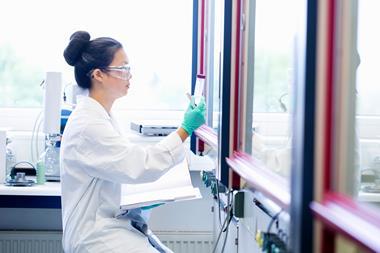French researchers have exploited iron oxide structures found in bacteria to kill tumours using a magnetic field
Claims that magnets can cure cancer might sound like quackery. But French researchers have harnessed iron oxide structures from bacteria to selectively kill tumour cells using an alternating magnetic field (AMF).
The idea of killing cancerous cells using heat - hyperthermia - has been around for some time. Originally the heat was generated using radiation, but this damages the surrounding healthy tissue, as well as the tumour. This has led researchers to search for better ways to target cancer.
Recently, iron oxide nanoparticles have generated interest in this area. In the presence of an AMF, they oscillate and generate heat which can induce cell death. As nanoparticles can be injected at specific sites, the heat they generate is localised in a precise area.

Edouard Alphand?ry and his colleagues from the Universit? Pierre et Marie Curie, Paris, now report the first use of magnetosomes in this type of heat therapy. Magnetosomes are organelles containing magnetite (Fe3O4) crystals which are produced by certain types of bacteria. These crystals allow these bacteria to align themselves with the Earth’s magnetic field. Sarah Staniland, a lecturer in bionanoscience at the University of Leeds, who has worked extensively with magnetotactic bacteria, says that magnetosomes help the bacteria to move in straight lines and this was thought to help them find food. ’But it seems their purpose may be more complex than this as it still remains a mystery,’ she says.
Alphand?ry’s team found that strings of up to six of these magnetic organelles isolated from magnetotactic bacteria were more effective than synthetic nanoparticles at killing cultured tumour cells. They also injected the magnetosomes into tumours in mice and treated them with three 20 minute bursts of AMF at 24 hour intervals. They found that the temperature of the tumours rose by 10oC and they shrank significantly.
The organelles perform better than their synthetic counterparts because they enter the tumour cells on application of the AMF, unlike nanoparticles. Once there, they also generate more heat, in a more uniform way than iron oxide nanoparticles of the same size. Staniland says that ’the magnetite in magnetosomes is highly crystalline and slightly reduced, so these differences could be a reason why they are performing better’.
Mark Hurwitz, a radiation oncologist at Harvard Medical School, says ’the work of Alphand?ry et al reveals several potential advantages to the use of magnetosome chains in pre-clinical models, including enhanced heating efficacy, that warrant further evaluation.’
Alphand?ry set up the spin out company Nanobacterie in 2008 to take magnetosomes into clinical trials. ’First we have to decide upon a cancer to work on,’ he says. Brain, breast or prostate cancer are suitable targets as they have been successfully treated with hyperthermia before. Results from the clinical trials are expected in three to four years.
Josh Howgego
References
E Alphandéry et al, ACS Nano, 2011, DOI: 10.1021/nn201290k






No comments yet